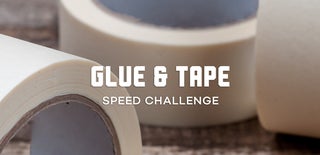Introduction: How to Make and Use Glue From Pine Resin
Pine trees are an extremely useful resource. The entire tree is edible, though not all that tasty! You can use the roots and inner bark for cordage, you can eat the nuts from the pine cone, you can boil the pine needles to make tea, and many other things, but today we will talk about resin. Resin is an interesting material, it is very flammable, which makes it a good fire starter! It is different from sap because sap is used to carry nutrients throughout the tree, whereas resin is used to protect the tree from damage such as a limb breaking off or the bark being damaged by insects. It is much thicker than sap, and much stickier! Today, we will create glue from it!
Quick Tip:
Any sort of oil will get the sticky resin off of your hands, clothes, etc (I have found baby/mineral oil to work best.)
Supplies
You will need:
- Pine Resin
- metal container that you don't care about (Like an Altoids or nut tin)
- Heat source
- stirring utensil
- Charcoal, but you could also use rabbit scat, wood ash, dry plant matter, or beeswax.
*Note: use natural wood charcoal, not the stuff for a barbecue grill. I will outline how to make it below.
Step 1: Collect the Resin
Pretty much any pine tree will have some amount of resin. I was lucky enough to find a tree dripping with resin. Collecting it is not rocket science, just grab a stick and scoop it into your container. Just be sure to leave a layer of resin on the tree so it can still protect itself!
Step 2: Make the Charcoal
The reason we mix charcoal or wood ash with the resin is to make it harder and less sticky. To make the charcoal, grab an Altoids tin, or a tin can with the lid taken off by a safety can opener (so you can put the lid back on), and poke a hole in the lid. Now fill the container with preferably *hardwood twigs (You do not want to use resinous wood due to its sticky nature) and put the lid on. Set it upright in a fire and wait 10-20 minutes. If you see a flame shooting from the hole of the container, don't worry, it's just the wood gas burning off, a natural byproduct of burning wood. Take it out to check if it's fully charred. If not, set it back in the fire for a few more minutes.
*Hardwood means that it isn't in the conifer family (softwoods). Some examples of hardwood include: oak, walnut, maple, hickory, etc.
Step 3: Melt and Mix the Resin
Now that you have your resin in a heat tolerant container, you can proceed in melting it. The goal here is to make it harder than raw resin, because resin alone is very sticky, but will not harden and hold anything together. To melt it I created a versatile little stove using a fancy heat tin from the dollar store and some utility wire for the stand as pictured. Place the resin over the heat, but don't let it boil, as it will release the resin's natural oils that give it it's sticky nature. While it is melting, proceed in crushing your charcoal into a fine powder. The typical ratio is 1 part charcoal to 3 parts resin. Add the charcoal once the resin is fully melted. If you use too much, it will become too brittle for this application. If you use too little, it won't become as strong, but don't worry about getting it exact.
Step 4: Let the Resin Cool
Take the resin off the heat and stir a little. Wait for it to reach the consistency of vegetable shortening, grab yourself a stick and get a glob of the melted resin. Slowly turn and shape it on the end until it cools. Now you have a glue stick! You will notice how it is significantly harder than what you began with. That's all thanks to the charcoal.
Step 5: How to Use the Glue
Once you have created your glue stick, grab a candle or something of that nature and hold it over the flame until the "glue" starts melting. Now you can drip or rub it onto the thing you want to glue. You can also just remelt the glue in the container. The strength of the glue will vary depending on how you mix the charcoal. This would work well in a survival situation or any situation where you need to hold something together. Pictured above, is a photo of a ferrocerium rod I fixed with the glue. It worked extremely well. I was even able to seal a letter with it! You could also use it to patch a tent, waterproof boots, canoes or containers, and even fletch arrows! One of the best uses I have found for it is to use it to fix an axehead onto its handle. This also applies to hammerheads, screwdrivers, etc.
Step 6: How to Store the Glue
The best way I have found to store the glue is to find a green leaf or some parchment/freezer paper. Just wrap it around the stick. The extra glue can just be left in the container you used to melt it in.

Participated in the
Glue & Tape Speed Challenge








